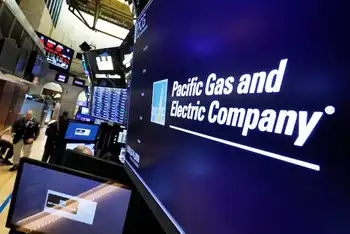Florida Power & Light boasts about low customer electric bills
By Florida Power & Light Company
Arc Flash Training CSA Z462 - Electrical Safety Essentials
Our customized live online or in‑person group training can be delivered to your staff at your location.

- Live Online
- 6 hours Instructor-led
- Group Training Available
“At FPL, we work hard every day to offer our customers an outstanding value: low rates, more than 99.98 percent reliability, a clean emissions profile and award-winning customer service,” said Eric Silagy, president of FPL. “We know that every dollar counts, and that’s why we’re investing in clean, highly efficient power plants that use less fuel. We pass 100 percent of those savings on to our customers, money that stays in our customers’ pockets and eventually ends up helping Florida’s economy.”
FPLÂ’s low rates add up to substantial savings. A typical residential FPL customer using 1,000 kilowatt-hours of electricity a month saved more than $320 last year alone compared to the average price paid by Floridians served by other electric utilities. In total, over the past five years, a typical FPL customer saved an estimated $1,800 versus the Florida average and $1,500 compared to the average American electric customer.
Moreover, while the prices of healthcare and other essentials have risen in recent years, FPL’s typical customer bill is actually lower than it was five years ago – recently, it’s down about seven percent compared with 2009.
FPL’s business customer rates are highly competitive as well – among the lowest in the state and below the national average. To encourage economic development, FPL offers special discounted electric rates to help new and expanding businesses create jobs for Floridians. To date, 29 companies have participated in this program, creating an estimated 4,700 new jobs in Florida.
“Florida has an attractive business climate, and FPL’s low electric rates certainly are an important factor,” said Bill Foley, president of Cheney Brothers Inc., one of the largest food service distributors in the southeastern U.S. The company recently broke ground on a new $100 million distribution center in Charlotte County that will create 300 jobs. “The discount we get from Florida Power & Light is essential,” Foley said.
A major contributor to low customer rates is FPL’s strategy of investing in highly efficient power plants that run on clean, American-produced natural gas. FPL has systematically reduced by 99 percent its use of foreign oil to generate electricity– from more than 40 million barrels a year in 2001 to about 200,000 last year. These investments have saved customers more than $6.5 billion in fuel costs with more savings expected.
FPLÂ’s Riviera Beach Next Generation Clean Energy Center in Palm Beach County, which officially entered commercial service recently, is the latest example of the companyÂ’s efforts to modernize its power plant fleet. FPL invested $1.3 billion to build the plant on the Port of Palm Beach site where a 1960s-era, oil-fired plant stood until it was dismantled in 2011. Construction was completed under budget and two months ahead of schedule.
“During the past four years, we’ve witnessed a remarkable rebound in Florida’s economy, particularly in the area of job growth,” said Silagy. “FPL remains committed to helping grow Florida’s economy and ensuring our state continues to be one of the most attractive and affordable places in the country to live and run a business.”
FPL offers multiple energy efficiency programs to help customers save even more, including the Online Home Energy Survey, where customers can get personalized recommendations on how to save. Customers also have access to the Energy Dashboard, where they can monitor their energy use by the hour, day or month to help them better manage their electric bills.











